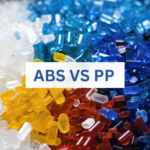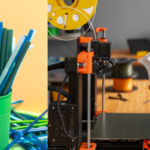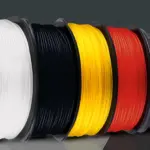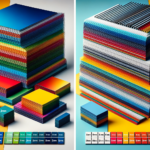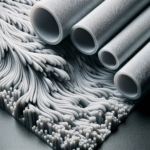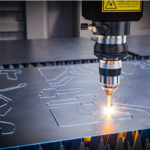Many businesses have relied on copiers for an extended time and therefore the feats are often accomplished without any consideration. However, in today’s context, copiers no longer serve the need for digitization necessities and cope with their handiness. Here we shall discuss the exact steps taken during the digital printing process, especially in the Australian Market.
So today, we shall be unfolding the concept of digital printing in a more subtle manner. We shall figure out how exactly does toner-based digital printing works? How your files are processed to form physical prints with Xerox, and how this entire process sums up to produce the final output.
Table of Contents
Concept of digital printing
The Digital printing process involves printing on different media like paper, fabric, acrylic, plastic, etc., directly from a digital image. It is a professionally done print work & publications from a digital source which are printed by inkjet printers in a variant format and in a high volume.
The adaptation of the conventional method makes it comparatively more expensive than offset printing. However, the cost of printing plates gets eliminated, which randomly declines its general cost.
Digital printing also can be done on-demand and during a short time; images are easily altered for every impression. With its huge saving and rapidly improving capabilities, digital printing has slowly begun to match the power of offset. It’s now possible to print thousands of sheets at a reduced price by following the digital printing process.
The most popular printers used in the digital printing process are inkjet and laser printers that drop pigments or toners on numerous substrates like paper, glass, canvas, metal, fabric, marble, and plastic. Usually, the ink or toner only forms a slime layer on the surface without permeating the substrate which happens in traditional methods. A fuser fluid with heat process is used for toner and the UV curing process is employed for ink so that it adheres firmly to the substrate.
Things to do before hitting the digital press
Digital Printing Process does not commence until and unless you have a clear idea of what you are actually going to print. So here, we shall be discussing the pre-process of digital printing before taking a digital leap.
Generate a thought
When starting the designing process, the first part is to brainstorm and contemplate what you are trying to generate together with your design. Is it for a billboard or a business card? Understand your audience and your targeted group? Once you are certain of what you would want to use, it will be easier for you to deal with the digital printing.
Use proper content
After getting hold of the most ideal thought, you can start together with your artwork. For that purpose, you will need content that will be anything from pictures to logos, representing brand colors, graphics, and text.
Making it more professional
A professional design print highlights the brand and reputation of the business. For big businesses, hiring an in-house designer would be a no problem to urge that professional graphic digital design. But for small companies, it can be a trouble as hiring a professional designer can cost them more than their estimated budget.
Likewise, investing in a good copywriter would help you figure out the content suited for your business. For a digital print design and print both are equally important.
Getting professional proof-reading help
Proofreading is a must for digital printing. Before printing the stuff, it is important to identify and rectify the error. Since it is a digital print, you cannot take chances and make errors. Check your artwork repeatedly before sending it for printing. Search for grammatical errors or image errors beforehand. If possible, take help from professional copywriters and allow them to finalize your product.
Step by step digital printing process
Here are the following steps were taken during the digital printing process
Step 1- Planning of content for printing
Some digital printing companies have in-house artists who create custom design supporting their requirements and directions. An in-depth discussion with the designer fully framed plan is prepared, which is then presented to the client as a demo. Once required changes are made it shall be incorporated accordingly before the preparation of the final version.
Step 2- Understanding the printing resolution
When the ultimate design is approved, the artwork is saved within the appropriate format with the right resolution as mentioned earlier, to make it easy for the printer to acknowledge and print the merchandise without error.
Step 3- Taking up the Digital printing process
First, the print heads are cleaned with a special fluid so that they do not become dry and suffer damage. This step is repeated after every 100 prints; sometimes the heads need to be cleaned even before 100 prints are completed, counting on the number of colors of the print.
Step 4: Collection of ink wastes
In this phase, a series of checks are conducted. With every printing, some waste inks are produced by the printer, and it is collected in a drum.
This drum must be monitored, and frequently emptied to make sure that there are no ink spills out. The printer features a container of cleaner; whenever the cleaner levels get low, it gets replenished.
This cleaner is must to the printing, and hence care needs to be taken to make sure that the printer never runs out of the cleaner. Whenever the printer stops and restarts, it uses a particular amount of cleaner and insufficient cleaner could damage the heads.
The ink temperature also must be checked; the printer must operate at a temperature between 20 and 25 degrees Celsius. A temperature outside this range could cause damage to the printer heads.
Step 5 – Printing the client’s artwork
The stage is about printing the customer’s artwork on the merchandise after a successful examination of their printing project.
Step 6 – Figuring out the acceptable pallet for printing
There are different sized pallets to carry the merchandise. Counting on what is being printed, the acceptable sized pallet is attached to the machine, and therefore the product is laid out for printing.
Step 7- Straightening the creases
The material or product to be printed is laid flat on the board with no creases. If there are any creases, the prints are going to be distorted.
Step 8 – Printing the prepared content
The digital printer begins printing by moving the print heads from side to side, on the fabric, spraying ink on the planned content.
Step 9 – Drying of print
The material obtained from the pallet gets transferred to the enormous dryer once the printing is complete. It is then conveyed through an enormous dryer at the acceptable temperature, to make sure that the paint is baked onto the item.
Step 10 – Quality review of the final product
The last step comprises a quality check. Once we are satisfied with the standard, the products are packaged and dispatched to the customers.
Digital printing is extremely popular in the textile sector as it is the fast-growing business gaining a high amount of popularity through digital prints. The quality and texture offered in digital printing are of extremely high quality which works for every digital promotion, digital prints, and digital media offering greater clarity.
Industry experts predict a better demand for digitally printed fabrics. Digital printing offers you more variety, and faster turnaround.
Any shape plastics offer digital printing service at an affordable price. We are Australia’s best printing service aiming to provide customer satisfied service. For any digital printing service contact us!
